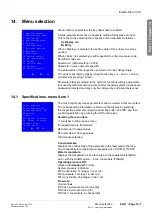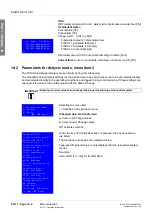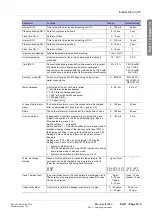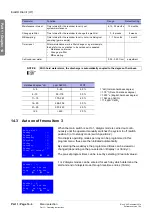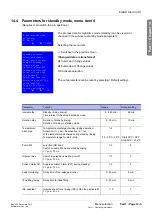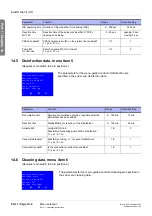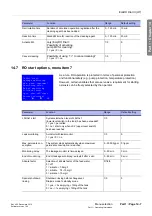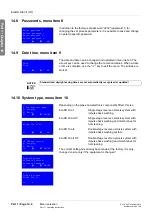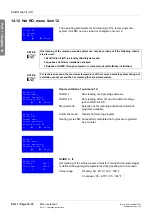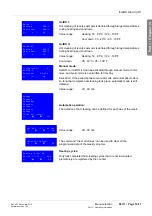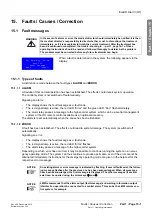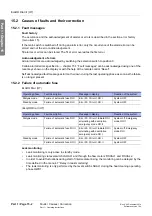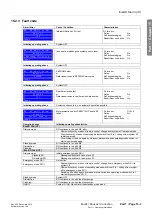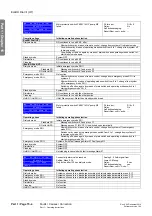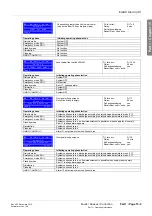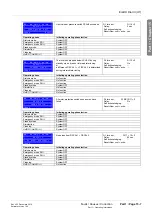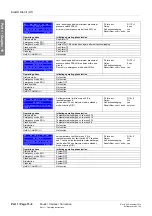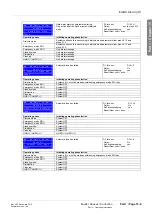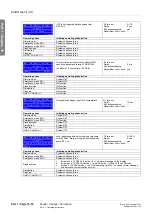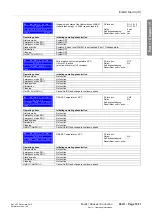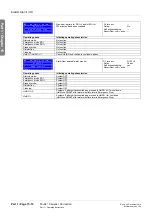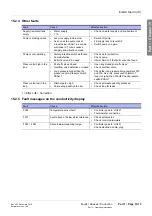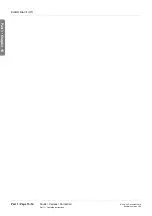
Faults / Causes / Correction
Part 1 • Page 15-1
Part 1 – Operating Instructions
Rev. 4.00 December 2014
Software version 1.04
EcoRO Dia I/II (HT)
Part 1 • Ch
apter 15
15. Faults / Causes / Correction
15.1 Fault messages
15.1.1 Types of faults
A distinction is made between the fault types
ALARM
and
ERROR
.
15.1.1.1 ALARM
A deviation from normal operation has been established. The effects could impair system operation.
The control system is not switched off automatically.
Signaling an alarm:
•
The display shows the fault message as a fault code.
•
The red signal lamp is active, the red LED “Error” and the green LED “Run” flash alternately.
•
The alarm relay passes a message to the higher-order system, which can be a central management
system or the RO remote control available as an optional accessory.
The alarm is reset automatically when the cause has been eliminated.
15.1.1.2 ERROR
A fault has been established. The effects could lead to system damage. The system is switched off
automatically.
Signaling an error:
•
The display shows the fault message as a fault code.
•
The red signal lamp is active, the red LED “Error” flashes.
•
The alarm relay passes a message to the higher-order system
Depending on which error has occurred, it may be possible to continue running the system in an emer-
gency operating mode. The system can thus continue to produce permeate, even if the error cannot be
eliminated immedately. Instructions for the emergency operating mode are given in the help text for the
respective error messages.
WARNING
In the event of a alarm or error, the medical director should immediately be notified. It is then
the medical director‘s responsibilty to direct whether or not to discontinue the treatment
immediately, or if it is acceptable to finish the current treatment. After the treatment has
been discontinued or completed, the trouble-shooting in
part 1, page 16-1 of these
operating instructions should be read and followed thorougly to determine the problem.
The problem must be corrected before any future treatments can begin.
When a fault is determined in the system, the following appears in the
display.
wd dd:mm:yy hh:mm
Fault ID
Fault message
Menu
(reset)
NOTICE
An existing alarm or error message is indicated by flashing. If several faults exist, the follow-
ing message flashes after the previous one has been acknowledged. When all messages
have been acknowledged, the first message is displayed. The other messages (if several
exist) can be queried using the arrow keys and .
NOTICE
LMW recommends that the alarm output (fault message) and warning information output
(disinfection operation) be connected to a central alarm. This can be the LMW remote con-
trol system, for example.

